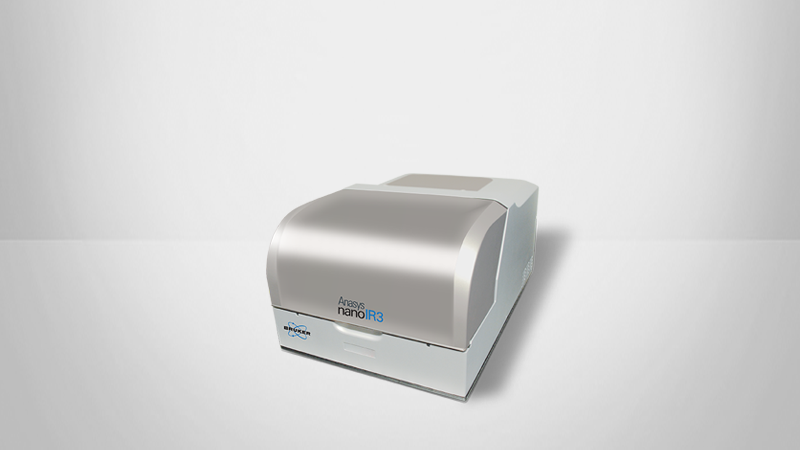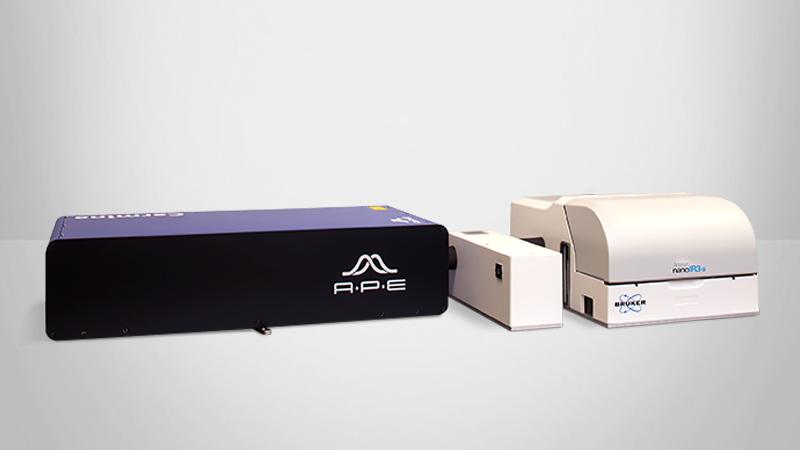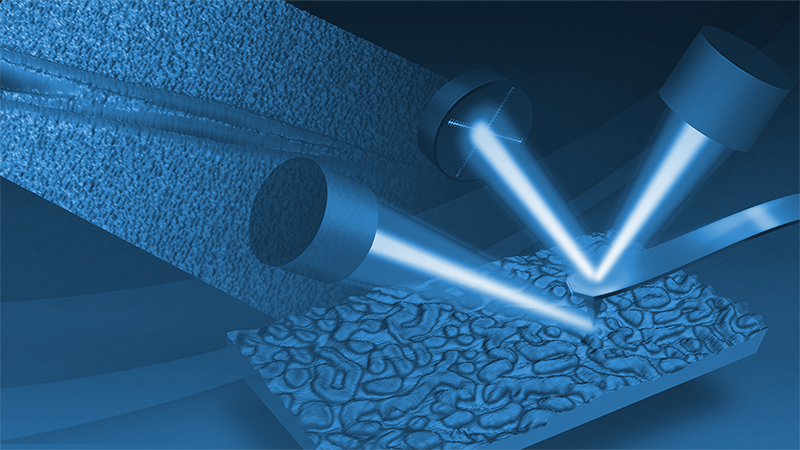Surface Sensitive AFM-IR
Chemical Insights into the Top Surface Only
Bruker's patented Surface Sensitive AFM-IR mode enables high-resolution, high-sensitivity chemical imaging of thin film surfaces through selective chemical probing of the top surface layer only. With its combination of capabilities, Surface Sensitive mode:
- Improves AFM-IR probing depth from >500 nm to <10 nm with correlation to FTIR;
- Uniquely combines high spatial resolution and high surface sensitivity chemical imaging and spectroscopy;
- Eliminates the need for cross-sectioning; and
- Provides complementary data to traditional analytical techniques (FTIR, XPS, TOF-SIMS).
For more information about Surface Sensitive AFM-IR, Bruker nanoIR technology, or upgrading your nanoIR system:
Surface Probing vs. Volume Probing Techniques
AFM-IR is a powerful volume probing tool for nanoscale chemical imaging and spectroscopy and strongly correlates to absorption-based FTIR measurements.
Surface Sensitive AFM-IR improves nanoIR as a surface probing technique to enable measurement of a small, quantitatively controlled probing depth and volume. It is then possible to distinguish top surface data from that of layers and bulk material beyond the probing depth.
In this example, Surface Sensitive AFM-IR spectra clearly shows the spectral differences between the top film and bulk film.
Surface Sensitive AFM-IR is a joint Bruker-CNRS patented technique that was developed by Professor Alexandre Dazzi, University, Paris de Saclay, France with subsequent enhancements by scientists and engineers at Bruker.
Surface Sensitive Measurements
The sample demonstrates measure of a thin film on thick polymer film. The sample is a approx. 30nm Polystyrene (PS) film on a 100nm Acrylate Polymer (PMMA) substrate.
The red spectra (collected with Resonance Enhanced AFM-IR spectroscopy) indicates the presence of both the PS top layer (1452 & 1492cm-1) and the PMMA substrate at 1736cm-1.
The blue spectra (collected using Surface Sensitive AFM-IR) shows that only the top layer of PS is detected while the PMMA substrate is absent, which demonstrates the surface-sensitive nature of the measurement.
Sample courtesy of Ali Dhinojwala, University of Akron
Removes Spectral Saturation
Spectral saturation is a significant barrier to the analysis of thick, strong IR absorbing materials using Resonance Enhanced AFM-IR and other conventional IR techniques. These techniques are also limited in their ability to differentiate the infrared signals from the top surface and sub-surface/bulk materials in the sample.
Conversely, Surface Sensitive AFM-IR can eliminate spectral saturation and band distortions and provides an IR signal that levels off and becomes constant beyond the probing depth.
The example below shows a comparison of Surface Sensitive AFM-IR (green spectra) vs Resonance Enhanced AFM-IR on a thick Kapton tape sample.
When measured with Resonance Enhanced mode, we can see evidence of spectral saturation around the carbonyl stretching band at 1720 cm-1. Surface sensitivity removes the spectral saturation; the spectrum measured with Surface Sensitive mode shows the two bands at 1777 and 1720 cm-1, which can both be assigned to a carbonyl stretching vibrational mode.
Significantly Reduce Time to Data
In order to identify the composition of multilayer films, traditional characterization techniques require samples to be sliced into cross-sections with a microtome. Microtomed cross-sections are then placed face-up on an IR transparent substrate for analysis, as pictured here, which enables identification of the chemical nature of each individual layer.
Conversely, Surface Sensitive AFM-IR enables measurement of non-cross sectioned samples. Because it does not rely on the use of microtomed samples and time-consuming cross-sectioning, Surface Sensitive mode significantly reduces sample preparation time for the analysis of multilayer films.
Upgrade Your nanoIR
Surface Sensitive AFM-IR mode is an available option for the Dimension IconIR, the nanoIR3/3-s/3-s Broadband systems, and can be utilized on the latest Bruker HYPERspectra QCL lasers (Daylight) and the nanoIR Broadband Spectroscopy laser (APE GmbH). Installed systems can be upgraded in the field with appropriate compatibility upgrades. Compatibility on the nanoIR2 and nanoIR2s systems is expected in the future. Please contact Bruker for more information.
See Surface Sensitive AFM-IR demonstrated in real-time on a nanoIR3-s in our Surface Characterization of Thin Films workshop:


